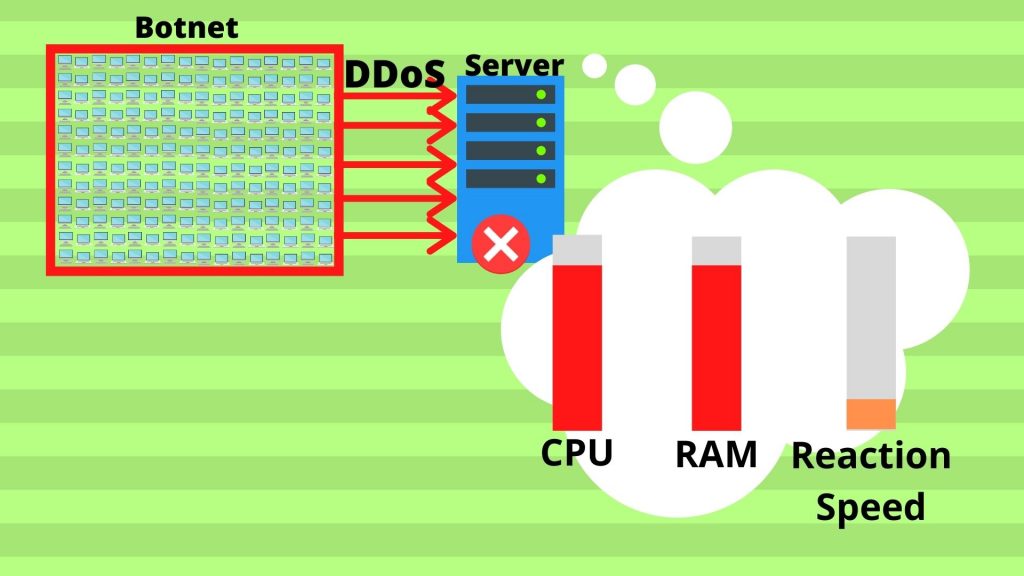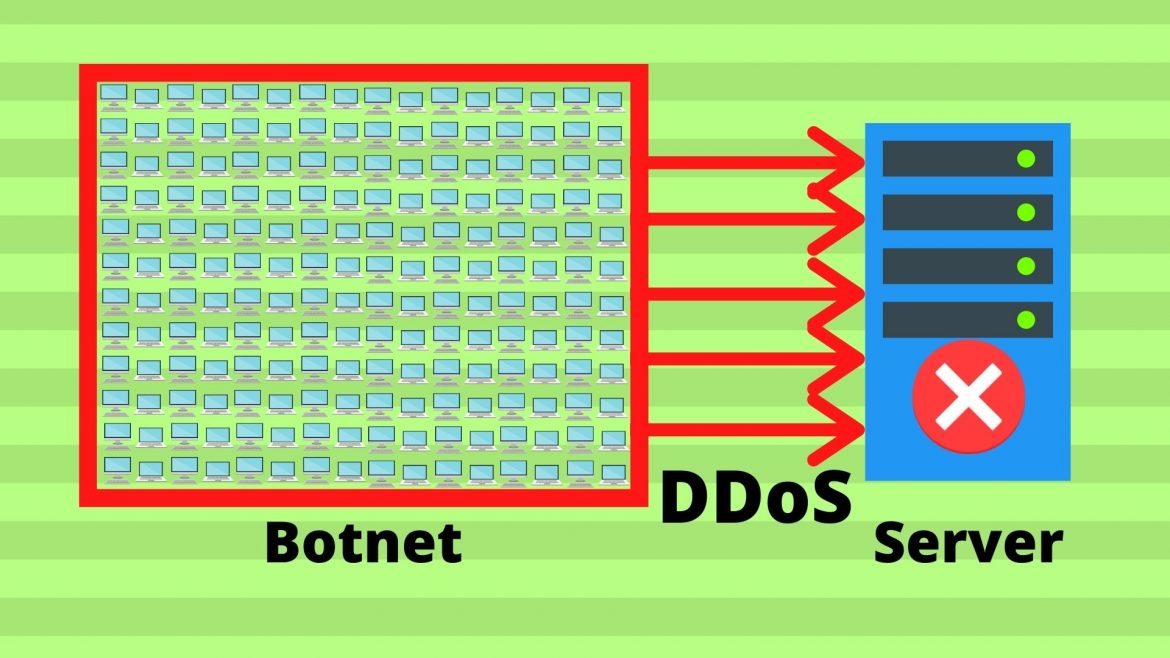If you’ve heard about tips for website owners, you may come across the word “DDoS” often. That refers to an attack called “Distributed Denial of Service”, and it can disable your website from serving your valuable pages. What is a DDoS attack? How to avoid it as general computer users and site owners? Let’s find out.
What is a DDoS Attack?
This type of attack is a cyberattack that sends enormous amounts of requests to overwhelm a target website. That action slows down the site significantly or even takes it offline completely because the server is too busy to process all requests at once and is one of the main reasons why your site can be down.
How is this done? Imagine that you try to overclock your computer. You open tens of apps at once to test the limits of the CPU and RAM. As more apps are opened, more system resources are used, and the computer becomes as slow as a snail. That’s how the server feels when it’s suffering from a DDoS attack.
Similarly, a group of computers is infected for the DDoS attack, and they form a botnet. The computers in the botnet then send requests and create excessive traffic that the website servers cannot handle.

Image Credit: Canva
The primary purpose for DDoS attacks is to take a site offline, but there might be some even more significant uses like covering data theft or requesting money like ransomware.
How to Prevent These Attacks?
After discussing how they work, it’s time to talk about how to prevent them. It’s probably easier than you think!
From a User’s Standpoint
As a user, your only way to prevent these attacks is to refuse to join botnets through cybersecurity measures. For instance, you should not click on any suspicious links or download any unknown attachments. Moreover, you must only download software from official sources. You should also keep all software up-to-date and run frequent antivirus scans.
Remember that the programs that drive botnets are malware, so all recommendations to keep malware out of your devices apply here.
From a Website Owner’s Standpoint
However, it is a dramatically different set of precautions when it comes to website owners. Firstly, you should consider obtaining a DDoS protection service. Secondly, you should have backup systems in case something goes wrong with the main one, and ideally not save your website on only a single server. Thirdly, you should consider investing in a firewall that can block unusual traffic from prohibited IP addresses.
Moreover, it’s best to make backup plans. For instance, try to take your site offline if it suffers from this type of attack. It can prevent hackers from doing something else while using DDoS to help cover the malicious actions. You should keep an eye on the site traffic to see if something goes wrong. If you see unusual spikes, it might indicate it’s under attack.

Note: Data in this image is not real and does not reflect the current conditions of this website
Image Credit: Canva
Conclusion
In this article, we briefly discussed DDoS attacks (Distributed Denial of Service) and how it works. We’ve also talked about prevention measures we can take. However, we have to learn more to further prevent these attacks from happening, so please visit the websites in the references below.
References and Credits
- Imperva. (n.d.). Distributed Denial of Service (DDoS). Retrieved April 24, 2021, from https://www.imperva.com/learn/ddos/denial-of-service/
- Cloudflare. (n.d.). What is a DDoS Attack? Retrieved April 24, 2021, from https://www.cloudflare.com/learning/ddos/what-is-a-ddos-attack/
- Kaspersky. (2018, January 25). What is a DDoS Attack? Retrieved April 24, 2021, from https://www.youtube.com/watch?v=yLbC7G71IyE
- Kaspersky. (n.d.). What is a DDoS Attack? – DDoS Meaning. Retrieved April 24, 2021, from https://www.kaspersky.com/resource-center/threats/ddos-attacks
- McAfee. (2021, March 24). What Is a DDoS Attack and How to Stay Safe from Malicious Traffic Schemes. Retrieved April 24, 2021, from https://www.mcafee.com/blogs/consumer/consumer-threat-notices/ddos-attack-work/
- (2016, August 26). 10 easy ways to prevent malware infection. Retrieved April 24, 2021, from https://blog.malwarebytes.com/101/2016/08/10-easy-ways-to-prevent-malware-infection/
- Cristina Chipurici. (2016, February 18). What is a Botnet & How to Prevent Your PC From Being Enslaved. Retrieved April 24, 2021, from https://heimdalsecurity.com/blog/all-about-botnets/
- HostPapa. (2020, November 11). How to Prevent a DDoS Attack on Your Website. Retrieved April 24, 2021, from https://www.hostpapa.com/blog/security/how-to-prevent-a-ddos-attack-on-your-website/
- Paul Rubens. (2018, June 26). How to Prevent DDoS Attacks: 6 Tips to Keep Your Website Safe. Retrieved April 24, 2021, from https://www.esecurityplanet.com/networks/how-to-prevent-ddos-attacks-tips-to-keep-your-website-safe/
- Amazon Web Services. (n.d.). What is a DDoS Attack? Retrieved April 24, 2021, from https://aws.amazon.com/shield/ddos-attack-protection/
- Paul Roberts. (2015, September 28). DDoS As a Cover for Data Theft. Retrieved April 24, 2021, from https://digitalguardian.com/blog/ddos-cover-data-theft

